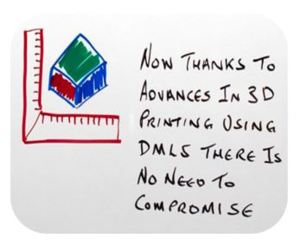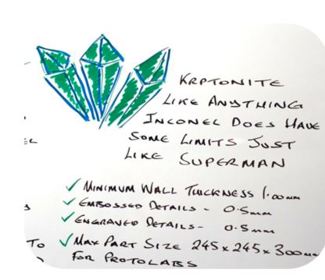
3D Printing Inconel
Your masterclass in product design and development
Protolabs’ Insight video series
Our Insight video series will help you master digital manufacturing.
Every Friday we’ll post a new video – each one giving you a deeper Insight into how to design better parts. We’ll cover specific topics such as choosing the right 3D printing material, optimising your design for CNC machining, surface finishes for moulded parts, and much more besides.
So join us and don’t miss out.
Insight: 3D Printing Inconel
Transcript
Hi, it’s Friday, which means it’s time for another Insight video.
Today I’m going to talk you about the super allow Inconel 718 and how 3D printing technology has really opened up how you can use this material.
But first of all, why is it known as a superalloy? Well quite simply it can cope in extreme environments where other metals would struggle or even not cope at all. Inconel can be permanently used in applications of over 600oC retaining its high strength and toughness plus corrosion resistance. It is also very light. In these environments, aluminium and steel would succumb to creep and copper would simply melt away.

And it is equally good in extreme low temperatures and is used in cryogenic environments where it helps prevent parts from becoming brittle, while again retaining its toughness.
This nickel and chromium mix is truly the Superman of the metal alloy world.
You won’t be surprised to learn that it is used extensively in aerospace applications where it can account for up to 50% of the weight of a turbojet engine. It is the main component for discs, blades and casings of the high-pressure section of the compressor and discs, plus some of the blades of the turbine engine.
In fact, without access to superalloys like Inconel, aerospace would probably not have advanced to the extent that it has today.

And it’s not just the aerospace industry where this superalloy stars, it is a common material for extreme environments in heavy industry as well.
First produced in the 1940’s if you fast forward to today, we have materials that evolved from those early superalloys. Today Inconel 718 is the world’s predominant superalloy. Its strength is derived from its ability to create a thick stable passivating oxide layer at temperatures as high as 7040C protecting the material from attack and retaining its good tensile, fatigue, creep and rupture strength.
What an amazing material.
Unfortunately, it is so amazing that there is not much that can touch it – so it’s extremely hard to machine requiring expensive tooling that reach very high temperatures on the edge of the machining insert. That and Inconel’s abrasive nature leads to high wear rates, chipping, notching and the cutting edge breaking on the tool.
Other traditional manufacturing methods when applied to Inconel 718 often end up sacrificing the very properties that you want in order to obtain the desired shapes.
Now, thanks to advances in 3D printing using direct metal laser sintering, or DMLS, there is no need to compromise. It also means that using this additive manufacturing technology, which builds a series of very fine layers on top of each other using a laser to melt the metal powder to the next layer, you can design even the most complex and intricate of designs – perhaps to save weight for example.

The process preserves Inconel 718’s mechanical properties and with its directional solidification it can help exceed the mechanical properties of the material’s cast and wrought counterparts.
And the other thing of course is that DMLS is an additive process. Inconel 718 is not cheap, you don’t get all of those amazing properties for nothing! Using DMLS will significantly cut down on your waste of this precious material. This layer wise building of components with near final contours produces only about 5% waste. In the aerospace industry they would say that this improves its “buy to fly” ratio.
Like anything of course Inconel does have some limits, just like superman and kryptonite.

In this case however we are talking about its geometric limits when using DMLS to produce parts. Let’s quickly run through them now.
First there is a minimal wall thickness of 1.00 millimetre and a minimum feature size of 1 mm, which is actually pretty small when you think about it.
If you need embossed details, then these must be at least 0.5mm high and wide and 0.8mm for text and images.
For engraved details you will be looking at a minimum of 0.5 mm depth and 0.6 mm width increasing to a minimum of 1.00mm width for text and images.
Also, because the part is formed in a chamber and needs support structures, there is a maximum part size. For us at Protolabs that is 245 by 245 by 300mm.
Now these restrictions will vary from supplier to supplier, so the best thing to do as always is to talk to them, find out what is possible and weigh up your options.
So, to pinch a cliché, when the going gets tough for your part, consider turning to Inconel 718. It is the superalloy of choice for many applications and now that it can be produced using 3D printing you can design almost anything you want.
Right that’s about it for this week. Have a great weekend and I’ll see you again next Friday.
With special thanks to Natalie Constable











